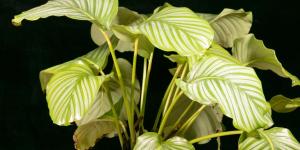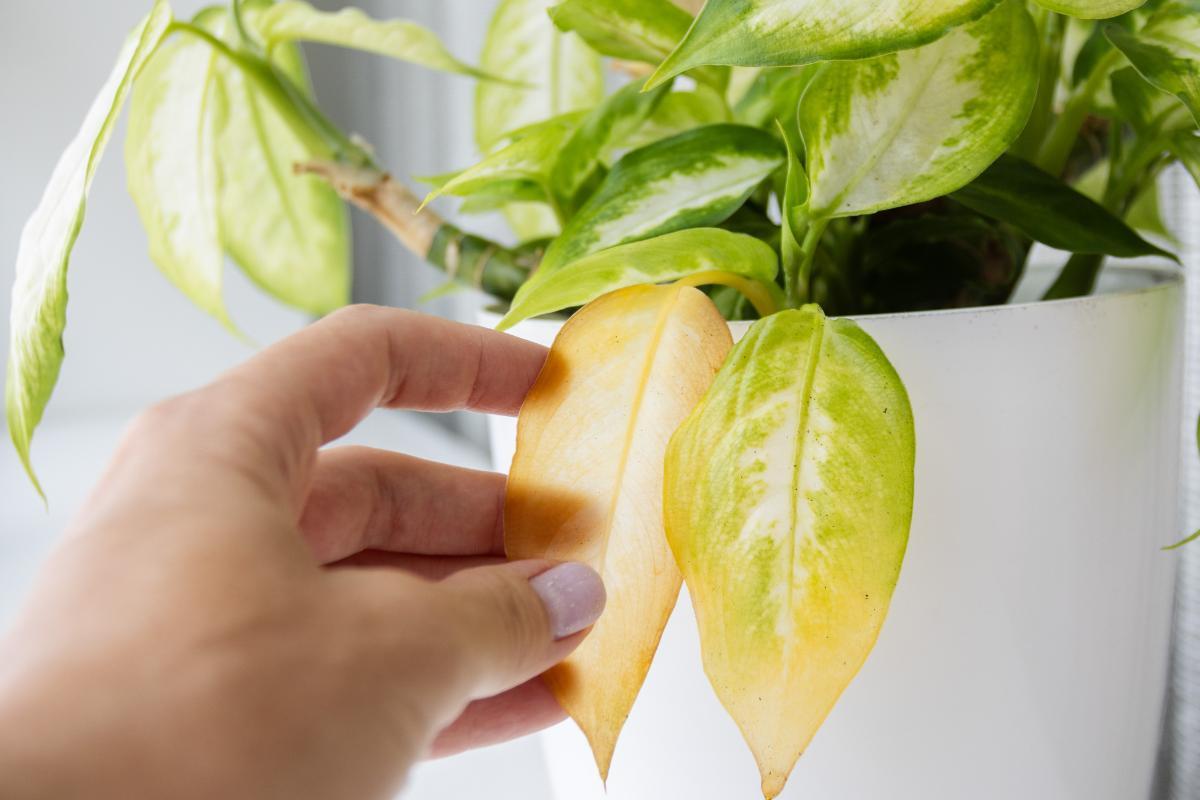Why is My Dumbcane Turning Yellow?


Dumb Cane, also known as Dieffenbachia, is a popular houseplant known for its striking, broad leaves and easy care. However, if you’ve noticed your Dumbcane’s leaves turning yellow, it could be a sign that something’s not quite right. Yellowing leaves can be caused by a variety of factors, including watering issues, light conditions, or even pests.
In this article by thedailyECO, we’ll explore the most common reasons for yellowing leaves in Dumb Cane, how to diagnose the problem, and expert tips to help your plant recover and thrive again.
Direct sun
Dumbcane (Dieffenbachia) is native to the rainforest understory, where it receives filtered sunlight. This makes it well-suited to partial shade indoors. Direct sunlight can be too intense for its leaves, leading to damage.
Furthermore, if you have a variegated dumbcane, excessive exposure can cause the plant to lose its distinctive variegation, resulting in leaves that are entirely green.
What should you do?
The most important thing is to avoid direct sunlight, which can be too intense for Dumbcane leaves, causing them to scorch or fade.
Dumb Cane is well-suited to partial shade conditions, such as near an east- or west-facing window. While it prefers brighter light, Dumb Cane can tolerate low light conditions. However, growth may be slower, and the plant may lose its vibrant color.
Looking for plants that can handle full sun without much fuss? Explore more in our article on sun-loving, easy-care plants.

Lack of sun
We've mentioned that the Dumb Cane does not tolerate direct sunlight but, if placed in a completely shaded area, it may experience chlorosis due to insufficient sunlight for photosynthesis. This process is essential for plants to produce chlorophyll, the pigment that gives leaves their green color.
When a plant doesn't receive enough light, it struggles to produce chlorophyll. With less chlorophyll, the plant's ability to photosynthesize is impaired. This means it can't produce the energy it needs to survive. As the plant's energy levels decline due to reduced photosynthesis, cells may start to die. The death of cells in the leaves can cause them to lose their green color and turn yellow.
What should you do?
Don't move the plant to full sunlight immediately, as this can shock it. Instead, gradually increase its light exposure over several weeks. Place it in a location with filtered sunlight or near a bright window. Also, rotating your Dumb Cane periodically will ensure that all sides of the plant receive equal light, preventing uneven growth and yellowing.
Did you know that chlorosis is a common cause of yellow leaves? Learn more about how to recognize and treat it to keep your plants healthy.
Lack of water
A Dumb Cane with yellow leaves often signals a need for increased watering. While this tropical plant prefers moderate moisture, under-watering can cause leaves to turn yellow or brown.
Humidity is another crucial factor. These plants thrive in humid conditions. Dry environments, often caused by heating systems or lack of natural humidity, can lead to leaf discoloration.
What should you do?
To address yellow leaves, consider the following:
Gradually increase the frequency of watering, ensuring the soil is not overly saturated. You can also mist the plant regularly, use a humidifier, or place the pot on a pebble tray filled with water.
If the plant is overwatered, it may develop root rot. Inspect the roots and repot if necessary.

Overwatering
A Dumb Cane, with yellow and drooping leaves is often a clear indicator of overwatering. When the plant receives excessive moisture, the leaves can become saturated and lose their turgor, leading to drooping and yellowing. This excess water can also contribute to root rot, a serious condition that can damage the root system.
Indoor plants, especially those like Dumb Cane, are more susceptible to overwatering due to slower evaporation rates compared to outdoor environments. With less sunlight and lower temperatures, moisture tends to linger in the soil, increasing the risk of root problems.
What should you do?
To address yellowing and drooping leaves caused by overwatering, allow the soil to dry out more completely between waterings.
Inspect the roots for signs of rot (mushy, black, or slimy). If found, repot the plant in fresh, well-draining soil and remove any damaged roots. It is also important to ensure the pot has drainage holes and use a well-draining potting mix.
Low-quality soil
The type of soil used in a pot significantly impacts how water is retained and drained, affecting plant health. Standard potting mix may not offer sufficient drainage for plants like the Dumb Cane, leading to overwatering issues.
To ensure your Dumb Cane flourishes, understanding its specific care needs is crucial. Selecting the right soil mix and preparing it correctly can prevent nutrient deficiencies and drainage problems, promoting healthier growth and minimizing the risk of root rot.
What should you do?
Here are some tips for choosing and preparing the right soil for your Dumb Cane:
- Opt for a potting mix specifically designed for indoor plants. It should be lightweight, porous, and have good drainage properties.
- Adding perlite or vermiculite to your potting mix can improve drainage and aeration.
- Avoid using heavy soils like clay, as they can retain too much moisture and lead to root rot.
Did you know that the choice between perlite and vermiculite can impact plant health? Discover which one is better for your plants in our next article.
Lack of iron
Iron is an essential element for photosynthesis, the process that enables plants to produce their own food using sunlight. It plays a critical role in the synthesis of chlorophyll, the pigment responsible for the green color of plants.
In addition to iron, plants also require other essential nutrients, such as nitrogen, potassium, and phosphorus. When any of these nutrients are deficient, the plant may exhibit symptoms like yellowing leaves and stunted growth.
The most common symptom of iron defiency is yellowing between the veins of young leaves, while the veins themselves remain green. Iron-deficient plants may also exhibit slower growth and reduced vigor.
In severe cases, leaves may turn completely yellow and drop prematurely.
What should you do?
Use an iron chelate product, which is a form of iron that is readily available to plants, even in alkaline conditions and continue to monitor your plants for signs of iron deficiency and adjust your approach as needed. If yellowing leaves are an issue, find out how chelated iron can help boost your plant’s vitality in our next article.

Unbalanced pH
Maintaining an optimal soil pH is essential for plants to absorb iron efficiently. A pH that is too alkaline, typically above 7, can hinder iron uptake. This is because iron becomes less available to plants in alkaline conditions. When plants are unable to absorb sufficient iron, they may exhibit symptoms of iron deficiency, including yellowing leaves.
What should you do?
To address iron deficiency caused by high soil pH, conduct a soil test to determine the pH level. If the pH is too high, amend the soil with organic matter or sulfur to lower it.
If you want to read similar articles to Why is My Dumbcane Turning Yellow?, we recommend you visit our Plant care and cultivation category.
- Bowie, S. (2024). Growing Dieffenbachia: Step By Step Beginners Instruction To The Complete Growing Techniques & Troubleshooting Solutions. (np): Amazon Digital Services LLC - Kdp.








